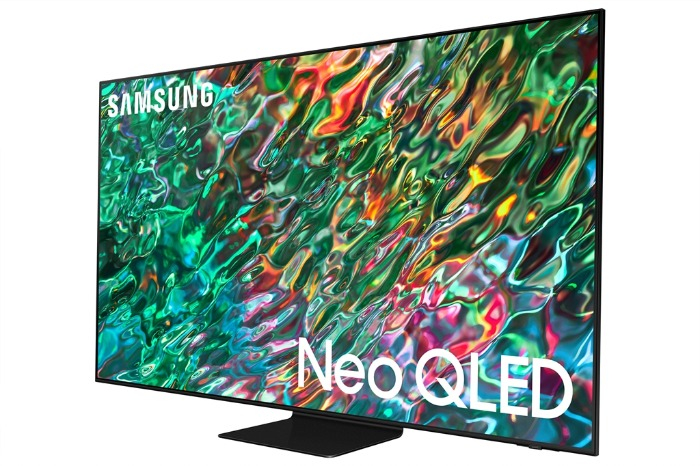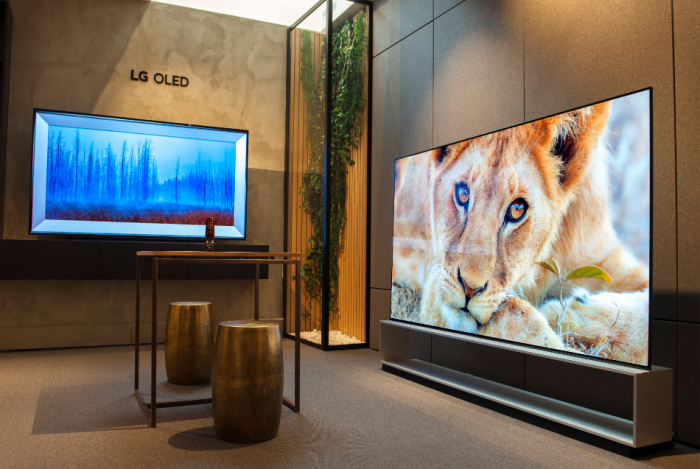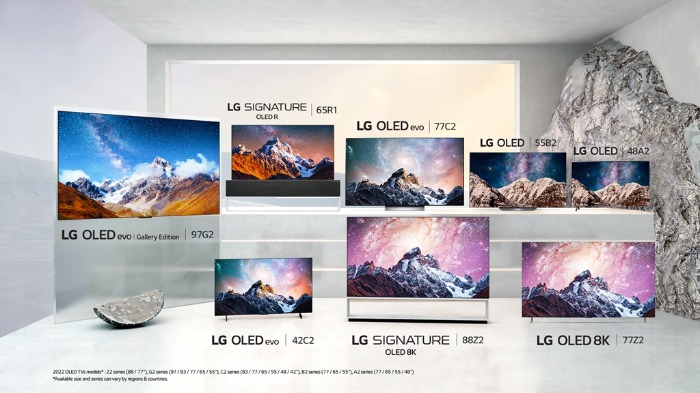Electronics
Rising global TV prices: A boon and risk for Samsung, LG
TV vendors need to diversify parts procurement channels to reduce supply-side risks, say analysts
By Mar 29, 2022 (Gmt+09:00)
3
Min read
Most Read
LG Chem to sell water filter business to Glenwood PE for $692 million


Kyobo Life poised to buy Japan’s SBI Group-owned savings bank


KT&G eyes overseas M&A after rejecting activist fund's offer


StockX in merger talks with Naver’s online reseller Kream


Mirae Asset to be named Korea Post’s core real estate fund operator


Global TV prices rose by a third last year and are expected to continue their uptrend this year, which could be a boon for the world’s two largest TV vendors, Samsung Electronics Co. and LG Electronics Inc., if they can control costs.
According to Samsung’s 2021 business report, its average TV sales price rose 32% from the previous year, driven by increased logistic costs and higher prices of LCD panels.
LG said its TV sales price gained 26.4% on average in 2021.
Industry watchers said the decent TV price gains are unusual as such prices tend to fall every year with TV vendors shipping old models in large quantities to lower their inventories and then unveiling new models.
In 2017, known as the year of the LCD panel supercycle, TV prices rose around 10% from the previous year.
Industry watchers said the stay-at-home trend in the COVID-19 pandemic era has boosted TV sales alongside increased launches of larger and more expensive premium TV models.

Samsung said in its report that display panels for TVs and monitors it received from its affiliate Samsung Display Co. and Chinese suppliers rose about 39% in 2021. LG said the prices of LCD TV panels it received from its suppliers gained 47.5% on average last year, boosting its TV sales prices.
The 55-inch LCD TVs manufactured by Samsung and LG currently sell at between 1.3 million won and 1.5 million won ($1,065-$1,229) a unit, up about 200,000 won from the second half of 2021.
PLANT SHUTDOWNS IN SOUTHEAST ASIA
Plant shutdowns in Southeast Asia, where many global TV manufacturers have their production bases, coupled with higher logistics costs in the wake of the Russia-Ukraine war, have also led to higher TV prices, industry officials said.
Samsung and LG said their 2022 TV lineups are focused on expensive premium models to offset rising component prices.
Samsung, the world’s top TV maker, recently said it has strengthened its large-size and high-end TV lineup, including the Neo QLED 8K and 75-inch and above size models.

The company plans to showcase its latest TV products, including Neo QLED TVs, during the online event, titled Unbox & Discover 2022, on Wednesday.
In mid-March, Samsung said it is taking preorders for its first quantum dot or QD-OLED TVs to be sold globally, starting with the North American and European markets.
Samsung is launching 65- and 55-inch 4K QD-OLED TVs with QD-OLED panels supplied by Samsung Display, which showcased its next-generation panels at CES 2022 in January.
Samsung Electronics also plans to unveil an 89-inch MicroLED TV, the company’s highest premium TV model, after May.
SUPPLY-SIDE RISKS
According to market tracker Omdia, Samsung was the dominant player particularly in the premium segment in 2021, accounting for 42.1% of the market for TVs priced at $2,500 or higher a unit. In the 80-inch and larger-size TV segment, Samsung controlled 44.9% of the market.

LG, in its efforts to expand its influence in the high-end segment, recently unveiled 22 models of OLED TVs, which are 20%-30% more expensive than LCD TVs.
LG is the world’s second-largest vendor in the overall TV market, although it is the top manufacturer of OLED TVs with a market share of over 60%.
The company recently said the shipment of its OLED TVs almost doubled to 4.05 million units last year, and this year it expects its OLED TV models to account for 42.1% of the $1,500 and higher-priced TV market.
“Samsung and LG need to diversify their TV parts procurement channels to reduce supply-side risks amid the rising trend of TV prices,” said an industry official.
Write to Shin-young Park at nyusos@hankyung.com
In-Soo Nam edited this article.
More to Read
-
 ElectronicsOLED materials makers set to shine as Samsung, Sony unveil new TVs
ElectronicsOLED materials makers set to shine as Samsung, Sony unveil new TVsMar 21, 2022 (Gmt+09:00)
3 Min read -
 ElectronicsSamsung, LG dominate global TV market with premium models
ElectronicsSamsung, LG dominate global TV market with premium modelsFeb 20, 2022 (Gmt+09:00)
2 Min read -
 ElectronicsSamsung CEO: M&A deals in offing, to expand MicroLED TV facilities
ElectronicsSamsung CEO: M&A deals in offing, to expand MicroLED TV facilitiesJan 06, 2022 (Gmt+09:00)
2 Min read -
 ElectronicsLG welcomes Samsung’s likely re-entry into OLED TV market
ElectronicsLG welcomes Samsung’s likely re-entry into OLED TV marketJan 05, 2022 (Gmt+09:00)
2 Min read -
 ElectronicsSamsung, LG see largest surge in TV prices in decade
ElectronicsSamsung, LG see largest surge in TV prices in decadeSep 03, 2021 (Gmt+09:00)
2 Min read
Comment 0
LOG IN


